|
Tap-tap-tap-tap. Do you ever hear that sound while walking around outside? If you do, you are probably hearing the sound of a woodpecker. More than 200 kinds of woodpeckers are found on Earth and they live on every continent except Australia and Antarctica. They are not only some of our most beautiful birds—they are some of the most important. Woodpeckers are especially adapted to pound, dig, and drill into wood. The main reason? To find food. Ants, beetle grubs, and other insects live under bark and inside dead wood, and woodpeckers have evolved to take advantage of this “food fest.” Woodpecker beaks are super sturdy, and the birds have extra-long, sticky tongues to probe into tiny holes and passageways. A woodpecker’s head has special shock absorbing features that keep the birds from getting brain damage while they are pounding away! As they look for food, woodpeckers are also carving out holes to live in. This helps dozens of other kinds of birds. How? Because many cavity nesting birds need holes in which to sleep and nest, but almost none of these birds can excavate holes for themselves. By drilling holes, woodpeckers are helping bluebirds, house wrens, chickadees, titmice, and many other bird species. Even some mammals and reptiles take advantage of woodpecker holes! About 22 species of woodpeckers live in the US and Canada. The most common is probably the Northern Flicker. Unlike most other woodpeckers, Northern Flickers spend a lot of time on the ground slurping up ants. In spring, they make raucous calls and like to drum on rain gutters, utility poles, and metal chimneys! Most woodpeckers use drumming to attract mates and shout, “This is my territory! Keep out!” Downy Woodpeckers also adapt well to cities and neighborhoods. They are among the smallest woodpeckers and can survive almost anywhere there are trees. Many other woodpeckers live only in certain regions or habitats of the US. Black-backed Woodpeckers live only in burned forests. Golden-fronted Woodpeckers are found mainly in Texas. White-headed Woodpeckers live only in high mountain areas of the West Coast. Wherever you find them, woodpeckers are fun to watch and fascinating to learn about. The next time you see one, stop and observe it for a while. Take a moment to appreciate its behavior and how it makes our world a richer, more interesting place. Woodpeckers are especially adapted to pound, dig, and drill into wood. The main reason? To find food. Ants, beetle grubs, and other insects live under bark and inside dead wood, and woodpeckers have evolved to take advantage of this “food fest.” Woodpecker beaks are super sturdy, and the birds have extra-long, sticky tongues to probe into tiny holes and passageways. A woodpecker’s head has special shock absorbing features that keep the birds from getting brain damage while they are pounding away! As they look for food, woodpeckers are also carving out holes to live in. This helps dozens of other kinds of birds. How? Because many cavity nesting birds need holes in which to sleep and nest, but almost none of these birds can excavate holes for themselves. By drilling holes, woodpeckers are helping bluebirds, house wrens, chickadees, titmice, and many other bird species. Even some mammals and reptiles take advantage of woodpecker holes! About 22 species of woodpeckers live in the US and Canada. The most common is probably the Northern Flicker. Unlike most other woodpeckers, Northern Flickers spend a lot of time on the ground slurping up ants. In spring, they make raucous calls and like to drum on rain gutters, utility poles, and metal chimneys! Most woodpeckers use drumming to attract mates and shout, “This is my territory! Keep out!” Downy Woodpeckers also adapt well to cities and neighborhoods. They are among the smallest woodpeckers and can survive almost anywhere there are trees. Many other woodpeckers live only in certain regions or habitats of the US. Black-backed Woodpeckers live only in burned forests. Golden-fronted Woodpeckers are found mainly in Texas. White-headed Woodpeckers live only in high mountain areas of the West Coast. Wherever you find them, woodpeckers are fun to watch and fascinating to learn about. The next time you see one, stop and observe it for a while. Take a moment to appreciate its behavior and how it makes our world a richer, more interesting place. Upper left: This large Guayaquil Woodpecker from Ecuador looks similar to our Pileated Woodpeckers, but some other South American woodpeckers come in radically different shapes and colors! Upper right: Hairy Woodpeckers are commonly found in forests and can dig deep for a juicy beetle grub! Lower left and right: Northern Flickers and Downey Woodpeckers are probably America's most adaptable woodpeckers and can often be seen in yards and neighborhoods. All photos courtesy of Sneed Collard and Braden Collard The Black-backed Woodpecker lives almost exclusively in burned forests where large dead trees are still standing. Woodpeckers provide nesting holes for dozens of our favorite birds including this spectacular Mountain Bluebird. 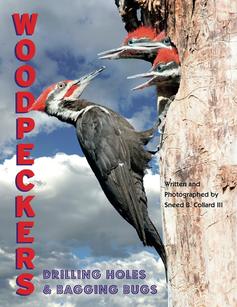 Sneed B. Collard III is the author of more than eighty books for young people, including his newest, Woodpeckers: Drilling Holes and Bagging Bugs, which received a starred review in Booklist magazine. To write the book, he and his son, Braden, spent four years observing and photographing woodpeckers in the wild. They even observed woodpeckers in Ecuador and Peru! Sneed visits schools and gives writing and professional development workshops all around the country. To learn more, visit his website, www.sneedbcollardiii.com. Also follow the blog that he and Braden write at www.fathersonbirding.com. You can read a review by Vicki Cobb here.
0 Comments
Let your imagination listen to the great historical menagerie of presidential pets and you’ll hear the sounds of their feathered friends, like Thomas Jefferson’s mockingbirds, or Calvin Coolidge’s canaries and maybe his pet goose – OR parrots? George and Martha Washington had more than one. When President James Madison and his wife moved into the White House in 1809, so did Dolley Madison’s green and yellow macaw parrot. Dolley was known for her fashionable turbans and often, for Polly, the big bright, squawk-ative bird on her shoulder, helping to greet her guests. And how thrilling, when high-spirited Polly swooped about the high-ceilinged rooms and dive-bombed the company! Later, she was part of the scary War of 1812 drama, when, in 1814, red-coated British soldiers torched the White House. But at least Dolley made sure they didn’t get their hands on the precious painting of President Washington, or her precious Polly. Just months later, General Andrew Jackson led a rough, frontier army down the Mississippi River to drive the British out of New Orleans. Victorious Andy Jackson, national hero, ended up being President, from 1829 to 1837. That old soldier knew a lot of salty language and so did his pet parrot, Poll. We know this because in 1845, he attended ex-President Jackson’s funeral – at least until a shocked human carried poor Poll out of the room. Too much sad excitement had set him to squawking curse words! At the end of the 1800s, President William McKinley amused himself by teaching his yellow-headed Mexican parrot how to whistle “Yankee Doodle.” After Mr. McKinley died of an assassin’s bullet, in 1901, former Vice President Theodore Roosevelt took office. He and First Lady Edith Roosevelt and their six children had LOTS of pets, including a big, beautiful parrot named Eli Yale. Eli was a deep blue hyacinth macaw. There would be other presidential parrots. After all, the big worldwide parrot family has 350 species. Parakeets, for instance: John F. Kennedy’s little girl had two of them. Lyndon B. Johnson’s family kept lovebirds, little candy-colored parrots. But more than a century has passed since a big, big-beaked macaw like Polly or Poll has lived in the White House. Deep blue Eli Yale was the last - so far. Andrew Jackson owned an African grey parrot. Wikimedia Cockatiels, cockatoos, and large flightless kakapos are just a few of the many kinds of parrots. One of the biggest is the gentle, South American hyacinth macaw – from head to tail, more than three feet long! Wikimedia Teddy Roosevelt with Eli Yale. Wikimedia MLA 8 Citation
Harness, Cheryl. "Polly Wants a President." Nonfiction Minute, iNK Think Tank, 13 Mar. 2018, www.nonfictionminute.org/the-nonfiction-minute/ polly-wants-a-president. Picture this: It’s cold gray October 1918 in France, in the Argonne Forest. World War I has been going on for four hideous, deadly years. You and about 500 of your fellow Americans are smack in the middle of a MASSIVE battle. You’re running out of food and ammo. Shells are EXPLODING all around you and some of them are American! Those guys don’t know where you and your buddies are, trapped in a hillside valley, surrounded by enemy Germans! How can Major Charles Whittlesey, the commander of this lost battalion, let those other Americans know where his unit is? They’re cut off from the telegraph wires; so what, wave a flag? That’ll just draw more enemy fire! The messengers he’d sent had been shot or captured. How about homing pigeons? In this awful war, more than a 100,000 of them were used to carry battlefield messages. The major had sent all but one of his pigeons only to see them shot out of the sky. Finally, the desperate officer calls for his last one, named Cher Ami, the French words for Dear Friend. Major Whittlesey scribbles out a message: “We are along the road parallel to 276.4.Our own artillery is dropping a barrage directly on us. For heaven’s sake, stop it.” He rolls the scrap of paper, stuffs it into the tiny silver canister attached to Cher Ami’s leg, and sends him up and away. This pigeon has flown 11 successful missions— will he make it now? He must! The Germans fire. Cher Ami falls! He’s hit! But he beats and flaps his wings, gains altitude, and flies 25 miles. Despite being blinded in one eye and shot in his bloodied breast, Cher Ami delivers the critical message, still attached to his leg, dangling by a bloody tendon. And 194 American soldiers are saved by their brave dear, feathered friend. For his heroic service, Cher Ami was awarded France’s highest medal, le Croix de Guerre (the Cross of War). In the months after the war ended, on November 11, 1918, ocean liners carried Cher Ami and many thousands of other veterans to America. He continued to be treated, but in the end, his injuries were too serious. Cher Ami died on June 13, 1919. Back in the USA, Major Charles Whittlesey gave speeches about the war. He said nothing about any sorrow or awful memories, so no one knows just why he jumped off a ship to his death in the sea, late one night in November 1921. But the memory of soldiers’ heroism and of one bird’s stubborn courage will never die. 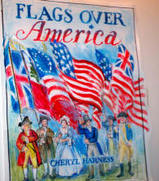 Cheryl's Latest book is Flags Over America. Click here to find out more about the book or click here to find out more about the author. MLA 8 Citation
Harness, Cheryl. "Dear Friend." Nonfiction Minute, iNK Think Tank, 8 01 2018, www.nonfictionminute.org/the-nonfiction-minute/dear-friend.  I’m often asked where I get my ideas for books. Let me give you an example: The other day, when I was walking in a neighborhood park, there was a man doing whole-body lifts on a piece of exercise equipment with a huge, brilliantly–colored parrot on his shoulder. It was so unusual that, without thinking, I called out: “What a beautiful bird! May I take your picture?” I was full of questions so we chatted for a while. Me: “What kind of bird is that?” Scotty, the parrot-man: “She’s a green-winged macaw.” Me: “What’s her name? How old is she?” Scotty: “Her name is Lucky. She’s 2 ½ years old but she can live more than 60 years. She’s a vegetarian, like me. Her beak is a nut-cracker. ” Lucky repeatedly kissed Scotty on the lips with her giant hooked beak as he turned to talk to her. She had been an expensive gift to him—they cost about $1500 at Bird Jungle, our local bird store. She couldn’t fly because he kept her wings clipped; it’s dangerous for a 2 ½ pound bird to be able to fly around the house. He had given her a bath that morning. She had communicated that she wanted one by putting her head under the faucet and looking at him. “Why did she want a bath?” I asked. “Was she dirty?” Scotty wasn’t sure why, except that it rains every day in her natural habitat—the rain forest. Then he pointed out a new feather on her neck. It was encased in a white sheath. A bath makes the sheath fall off and the feather fluffs up. Maybe that feels like undoing a pony tail This is often how I get ideas for books. I find something interesting and start asking questions. Of course, I paid a visit to Bird Jungle. What a noisy store! There I found more people to interview. It’s amazing how much you can learn from people who are experts. After a while I ran out of questions. That’s because I didn’t know enough to keep going. How can I remedy that? Go read a book or two about green-winged macaws and other rain forest birds. It could lead to a book idea about the rain forest like: This Place Is Wet. When I write, I don’t write just about content. I write what interests me about content. There’s a big difference. 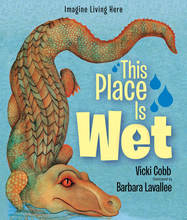 Vicki made a trip to the Amazon rain forest with her good friend, Alaskan artist, Barbara Lavallee. You can find out what they learned there by reading This Place Is Wet. For more information about the book, click here. Vicki Cobb is a member of iNK's Authors on Call and is available for classroom programs through FieldTripZoom, a terrific technology that requires only a computer, wifi, and a webcam. Click here to find out more. MLA 8 Citation
Cobb, Vicki. "I Met a Man about a Parrot." Nonfiction Minute, iNK Think Tank, 18 Dec. 2017, www.nonfictionminute.org/the-nonfiction-minute/ I-Met-a-Man-About-a-Parrot. Accessed 18 Dec. 2017.  Today is World Migratory Bird Day—a holiday designed to celebrate the many birds that travel our globe. Why do birds migrate? Why don’t they just stay in the same place all year long? There are many reasons…warmer weather, better nesting sites, and more plentiful food are just a few. Some birds travel very short distances. One example is North America's dusky grouse. This bird spends its winter in mountainous pine forests. In the spring, it “migrates” a mere 1,000 feet in elevation to deciduous woodlands. Here it feeds on seeds and fresh leaves. And then there are birds that travel very long distances. One world traveler is the Arctic tern. This bird migrates an astonishing 44,000 miles annually from the Arctic to Antarctica and back again. And finally there are birds that travel distances in between those two extremes, like the turtle dove. This bird migrates about 8,000 miles a year. You might wonder how scientists know where birds go, and how they get such accurate data about the birds’ migrations. They do this by tracking birds using satellite telemetry. Birds are fitted with small satellite tags. These tags transmit information about their journeys to scientists via orbiting satellites. You can sometimes see these satellites on dark nights. They look like tiny stars moving very slowly across the sky. An environmental organization called the Royal Society for the Protection of Birds (RSPB) fitted a turtle dove named Titan with a satellite tag. Titan’s tag had a tiny satellite transmitter, a battery, and a solar panel to keep the battery charged. Using this technology, scientists were able to track three of Titan’s migrations. The first was in the fall. Titan flew from a nesting site in Suffolk, England down to his wintering site in Mali, in West Africa. The second was in the spring when Titan migrated back to Suffolk, England, to the very site where he was originally found! The third was in the fall when he migrated back to Mali again. After that trip, the scientists lost track of Titan. Let’s celebrate World Migratory Bird Day by learning more about migratory birds and what we can do to help protect them. Click here to view some actual turtle dove migrations. 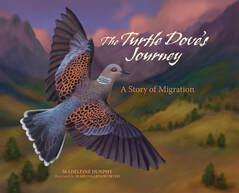 Madeleine Dunphy has written a book based on the migration of a real turtle dove that traveled 4,000 miles from England to Mali, in West Africa. To find out more about The Turtle Dove’s Journey: A Story of Migration click here. |
*NEWS
|
For Vicki Cobb's BLOG (nonfiction book reviews, info on education, more), click here: Vicki's Blog
The NCSS-CBC Notable Social Studies Committee is pleased to inform you
that 30 People Who Changed the World has been selected for Notable Social Studies Trade Books for Young People 2018, a cooperative project of the National Council for the Social Studies (NCSS) & the Children’s Book Council
Categories
All
Abolitionists
Adams Janus
Adaptation
Adaptations
Adkins Jan
Advertising
Aerodynamics
Africa
African American History
African Americans
Africa West
Agriculture
Aircraft
Air Pilots
Air Pressure
Air Travel
Albee Sarah
Alchemy
Alligators
Allusion
American History
American Icons
Amphibians
Amundsen Roald
Anatomy
Ancient
Ancient Cultures
Anderson Marian 1897-1993
Animal Behavior
Animal Experimentation
Animal Intelligence
Animals
Animation
Antarctica
Ants
Apache Indians
Apes
April Fool's Day
Architecture
Argument
Arithmetic
Art
Art Deco
Artists
Arts
Asia
Astronauts
Astronomy
Athletes
Atomic Theory
Audubon Societies
Authors
Autobiography
Automobiles
Aviation
Awards
Bacteria
Baseball
Battuta Ibn
Bears
Beatles
Beavers
Bees
Biodegradation
Biography
Biology
Biomes
Biomimicry
Biplanes
Birds
Black Death
Black History
Blindness
Blizzards
Bombs
Bonaparte Napoleon
Boone Daniel
Botany
Brazil
Bridges
Brill Marlene Targ
Brooklyn Bridge
Brown John
Buffaloes
Building Materials
Butterflies
Caesar
Caesar Julius
Caissons
Calculus
Calendars
Cannibal
Capitals
Caravaggio
Carbon Dioxide
Carnivores
Carson Mary Kay
Cartoons & Comics
Carving (Decorative Arts)
Cascade Range
Castaldo Nancy
Castles
Castrovilla Selene
Cathedrals
Cats
Caves
Celts
Cemeteries
Chemistry
Children's Authors
Child Welfare
China
Choctaw Indians
Christmas
Chronometers
Cicadas
Cinco De Mayo
Ciphers
Circle
Citizenship
Civil Rights
Civil Rights Movements
Civil War
Civil War - US
Climate
Climate Change
Clocks And Watches
Clouds
Cobb Vicki
COBOL (Computer Language)
Code And Cipher Stories
Collard III Sneed B.
Collectors And Collecting
Color
Commerce
Communication
Competition
Compilers
Composers
Computers
Congressional Gold Medal
Consitution
Contests
Contraltos
Coolidge Calvin
Cooling
Corms
Corn
Counterfeiters
Covid-19
Crocodiles
Cryptography
Culture
Darwin Charles
Declaration Of Independence
Decomposition
Decompression Sickness
Deep-sea Animals
Deer
De Medici Catherine
Design
Detectives
Dickens Charles
Disasters
Discrimination
Diseases
Disney Walt
DNA
Dogs
Dollar
Dolphins
Douglass Frederick 1818-1895
Droughts
Dr. Suess
Dunphy Madeleine
Ear
Earth
Earthquakes
Ecology
Economics
Ecosystem
Edison Thomas A
Education
Egypt
Eiffel-gustave-18321923
Eiffel-tower
Einstein-albert
Elephants
Elk
Emancipationproclamation
Endangered Species
Endangered-species
Energy
Engineering
England
Englishlanguage-arts
Entomology
Environmental-protection
Environmental-science
Equinox
Erie-canal
Etymology
Europe
European-history
Evolution
Experiments
Explorers
Explosions
Exports
Extinction
Extinction-biology
Eye
Fairs
Fawkes-guy
Federalgovernment
Film
Fires
Fishes
Flight
Floods
Flowers
Flute
Food
Food-chains
Foodpreservation
Foodsupply
Food-supply
Football
Forceandenergy
Force-and-energy
Forensicscienceandmedicine
Forensic Science And Medicine
Fossils
Foundlings
France
Francoprussian-war
Freedom
Freedomofspeech
French-revolution
Friction
Frogs
Frontier
Frontier-and-pioneer-life
Frozenfoods
Fugitiveslaves
Fultonrobert
Galapagos-islands
Galleys
Gametheory
Gaudi-antoni-18521926
Gender
Generals
Genes
Genetics
Geography
Geology
Geometry
Geysers
Ghosts
Giraffe
Glaciers
Glaucoma
Gliders-aeronautics
Global-warming
Gods-goddesses
Gold-mines-and-mining
Government
Grant-ulysses-s
Grasshoppers
Gravity
Great-britain
Great-depression
Greece
Greek-letters
Greenberg Jan
Hair
Halloween
Handel-george-frederic
Harness Cheryl
Harrison-john-16931776
Health-wellness
Hearing
Hearing-aids
Hearst-william-randolph
Henry-iv-king-of-england
Herbivores
Hip Hop
History
History-19th-century
History-france
History-world
Hitler-adolph
Hoaxes
Holidays
Hollihan Kerrie Logan
Homestead-law
Hopper-grace
Horses
Hot Air Balloons
Hot-air-balloons
Housing
Huguenots
Human Body
Hurricanes
Ice
Icebergs
Illustration
Imagery
Imhotep
Imperialism
Indian-code-talkers
Indonesia
Industrialization
Industrial-revolution
Inquisition
Insects
Insulation
Intelligence
Interstatecommerce
Interviewing
Inventions
Inventors
Irrational-numbers
Irrigation
Islands
Jacksonandrew
Jazz
Jeffersonthomas
Jefferson-thomas
Jemisonmae
Jenkins-steve
Jet-stream
Johnsonlyndonb
Jokes
Journalism
Keeling-charles-d
Kennedyjohnf
Kenya
Kidnapping
Kingmartinlutherjr19291968
Kingmartinlutherjr19291968d6528702d6
Kings-and-rulers
Kings Queens
Kings-queens
Koala
Labor
Labor Policy
Lafayette Marie Joseph Paul Yves Roch Gilbert Du Motier Marquis De 17571834
Landscapes
Languages-and-culture
Law-enforcement
Layfayette
Levers
Levinson Cynthia
Lewis And Clark Expedition (1804-1806)
Lewis Edmonia
Liberty
Lift (Aerodynamics)
Light
Lindbergh Charles
Liszt Franz
Literary Devices
Literature
Lizards
Longitude
Louis XIV King Of France
Lumber
Lunar Calendar
Lynching
Macaws
Madison-dolley
Madison-james
Madison-james
Mammals
Maneta-norman
Maneta-norman
Marathon-greece
Marine-biology
Marine-biology
Marines
Marsupials
Martial-arts
Marx-trish
Mass
Massachusetts-maritime-academy
Mass-media
Mastodons
Mathematics
May-day
Mcclafferty-carla-killough
Mcclafferty-carla-killough
Mckinley-william
Measurement
Mechanics
Media-literacy
Media-literacy
Medicine
Memoir
Memorial-day
Metaphor
Meteorology
Mexico
Mickey-mouse
Microscopy
Middle-west
Migration
Military
Miners
Mississippi
Molasses
Monarchy
Monsters
Montgomery
Montgomery-bus-boycott-19551956
Montgomery-heather-l
Monuments
Moon
Moran-thomas
Morsecode
Morsesamuel
Moss-marissa
Moss-marissa
Motion
Motion-pictures
Mummies
Munro-roxie
Munro-roxie
Musclestrength
Museums
Music
Muslims
Mythologygreek
Nanofibers
Nanotechnology
Nathan-amy
Nathan-amy
Nationalfootballleague
Nationalparksandreserves
Nativeamericans
Native-americans
Native-americans
Naturalhistory
Naturalists
Nature
Nauticalcharts
Nauticalinstruments
Navajoindians
Navigation
Navy
Ncaafootball
Nervoussystem
Newdeal19331939
Newman-aline
Newman-aline
Newton-isaac
New-york-city
Nobelprizewinners
Nomads
Nonfictionnarrative
Nutrition
Nylon
Nymphs-insects
Oaths Of Office
Occupations
Ocean
Ocean-liners
Olympics
Omnivores
Optics
Origami
Origin
Orphans
Ottomanempire
Painters
Painting
Paleontology
Pandemic
Paper-airplanes
Parksrosa19132005
Parrots
Passiveresistance
Patent Dorothy Hinshaw
Peerreview
Penguins
Persistence
Personalnarrative
Personification
Pets
Photography
Physics
Pi
Pigeons
Pilots
Pinkertonallan
Pirates
Plague
Plains
Plainsindians
Planets
Plantbreeding
Plants
Plastics
Poaching
Poetry
Poisons
Poland
Police
Political-parties
Pollen
Pollution
Polo-marco
Populism
Portraits
Predation
Predators
Presidentialmedaloffreedom
Presidents
Prey
Prey-predators
Prey-predators
Prime-meridian
Pringle Laurence
Prohibition
Proteins
Protestandsocialmovements
Protestants
Protestsongs
Punishment
Pyramids
Questioning
Radio
Railroad
Rainforests
Rappaport-doreen
Ratio
Reading
Realism
Recipes
Recycling
Refrigerators
Reich-susanna
Religion
Renaissance
Reproduction
Reptiles
Reservoirs
Rheumatoidarthritis
Rhythm-and-blues-music
Rice
Rivers
Roaringtwenties
Roosevelteleanor
Rooseveltfranklind
Roosevelt-franklin-d
Roosevelt-theodore
Running
Russia
Safety
Sanitation
Schwartz David M
Science
Scientificmethod
Scientists
Scottrobert
Sculpture
Sculpturegardens
Sea-level
Seals
Seals-animals
Secretariesofstate
Secretservice
Seeds
Segregation
Segregationineducation
Sensessensation
September11terroristattacks2001
Seuss
Sextant
Shackletonernest
Shawneeindians
Ships
Shortstories
Silkworms
Simple-machines
Singers
Siy Alexandra
Slavery
Smuggling
Snakes
Socialchange
Social-change
Socialjustice
Social-justice
Socialstudies
Social-studies
Social-studies
Sodhouses
Solarsystem
Sound
Southeast-asia
Soybean
Space Travelers
Spain
Speech
Speed
Spiders
Spies
Spiritualssongs
Sports
Sports-history
Sports-science
Spring
Squirrels
Statue-of-liberty
STEM
Storms
Strategy
Sugar
Sumatra
Summer
Superbowl
Surgery
Survival
Swanson-jennifer
Swinburne Stephen R.
Synthetic-drugs
Taiwan
Tardigrada
Tasmania
Tasmanian Devil
Tasmanian-devil
Technology
Tecumsehshawneechief
Telegraph-wireless
Temperature
Tennis
Terrorism
Thomas Peggy
Thompson Laurie Ann
Time
Titanic
Tombs
Tortoises
Towle Sarah
Transcontinental-flights
Transportation
Travel
Trees
Trung Sisters Rebellion
Tundra
Turnips
Turtles
Typhoons
Underground Railroad
Us-environmental-protection-agency
Us History
Us-history
Ushistoryrevolution
Us History Revolution
Us-history-war-of-1812
Us Presidents
Ussupremecourtlandmarkcases
Vacations
Vaccines
Vangoghvincent
Vegetables
Venom
Vietnam
Viruses
Visual-literacy
Volcanoes
Voting-rghts
War
Warne-kate
Warren Andrea
Washington-dc
Washington George
Water
Water-currents
Wax-figures
Weapons
Weather
Weatherford Carole Boston
Whiting Jim
Wildfires
Winds
Windsor-castle
Wolves
Woman In History
Women
Women Airforce Service Pilots
Women-airforce-service-pilots
Womeninhistory
Women In History
Women-in-science
Women's History
Womens-roles-through-history
Wonder
Woodson-carter-godwin-18751950
World-war-i
World War Ii
World-war-ii
Wright Brothers
Writing
Writing-skills
Wwi
Xrays
Yellowstone-national-park
Zaunders Bo
ArchivesMarch 2021
February 2021
January 2021
December 2020
November 2020
October 2020
September 2020
June 2020
May 2020
April 2020
March 2020
February 2020
January 2020
December 2019
October 2019
September 2019
August 2019
July 2019
May 2019
April 2019
March 2019
February 2019
January 2019
December 2018
November 2018
September 2018
June 2018
May 2018
April 2018
March 2018
February 2018
January 2018
December 2017
November 2017
October 2017
September 2017
March 2017
The NONFICTION MINUTE, Authors on Call, and. the iNK Books & Media Store are divisions of iNK THINK TANK INC.
a 501 (c) (3) nonprofit corporation. To return to the iNK Think Tank landing page click the icon or the link below. :
http://inkthinktank.org/
For more information or support, contact thoughts@inkthinktank.org
For Privacy Policy, go to
Privacy Policy
© COPYRIGHT the Nonfiction Minute 2020.
ALL RIGHTS RESERVED.
This site uses cookies to personalize your experience, analyze site usage, and offer tailored promotions. www.youronlinechoices.eu
Remind me later
Archives
March 2023
February 2023
January 2023
December 2022
November 2022
October 2022
September 2022
June 2022
May 2022
April 2022
March 2022
February 2022
January 2022
December 2021
November 2021
September 2021
April 2021
March 2021
February 2021
November 2020
October 2020
September 2020
June 2020
May 2020
April 2020
March 2020
February 2020
January 2020
October 2019
August 2019
July 2019
May 2019
April 2019
December 2018
September 2018
June 2018
May 2018
March 2018
February 2018
January 2018
December 2017
November 2017
October 2017
September 2017




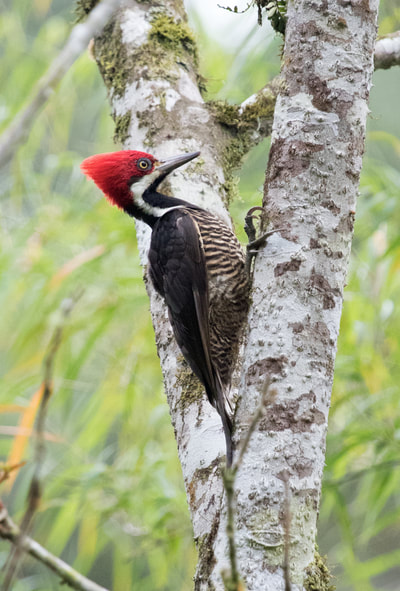
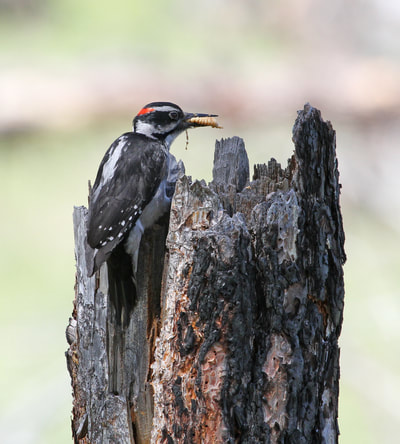
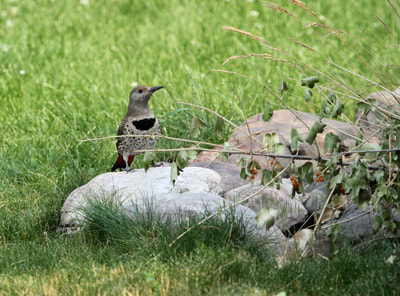

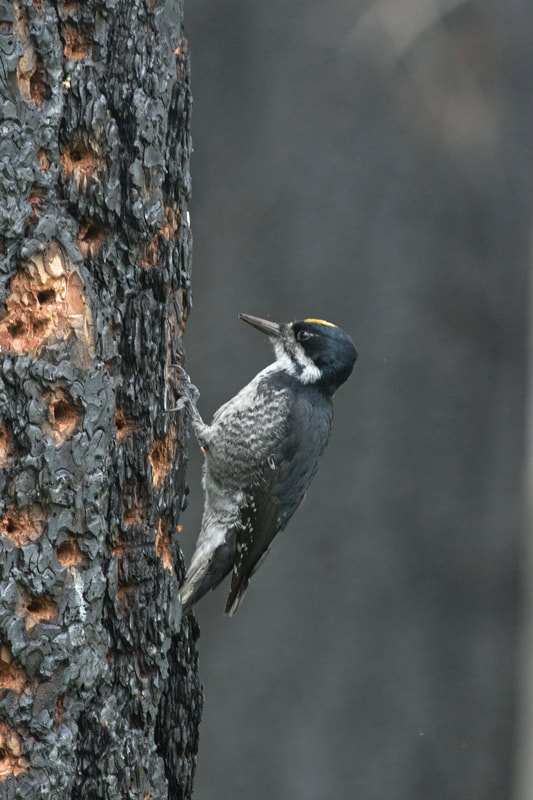
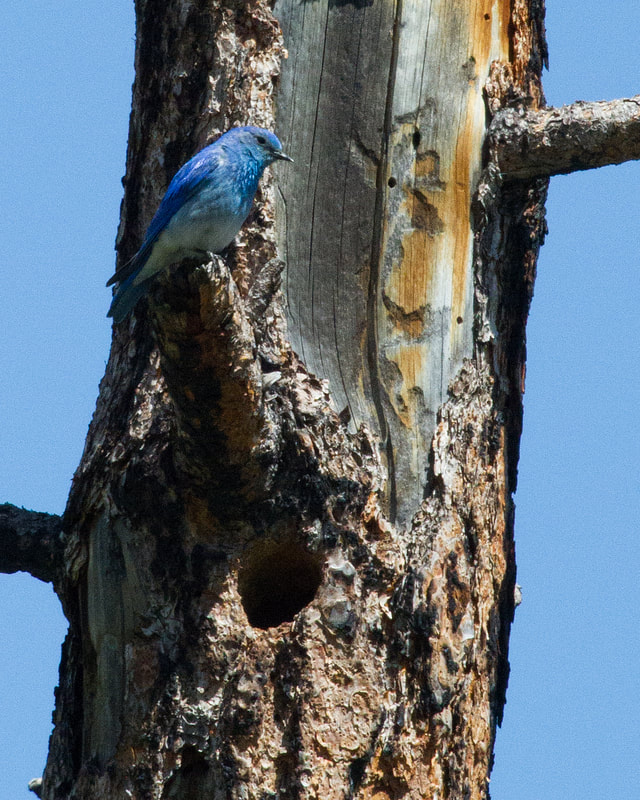
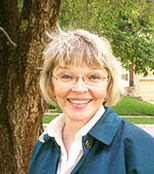


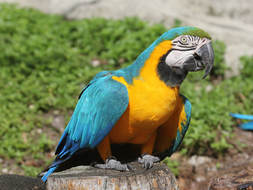
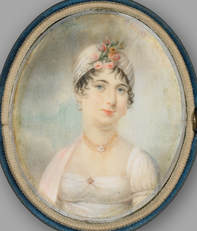
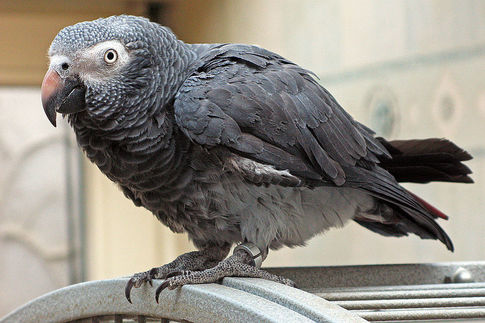
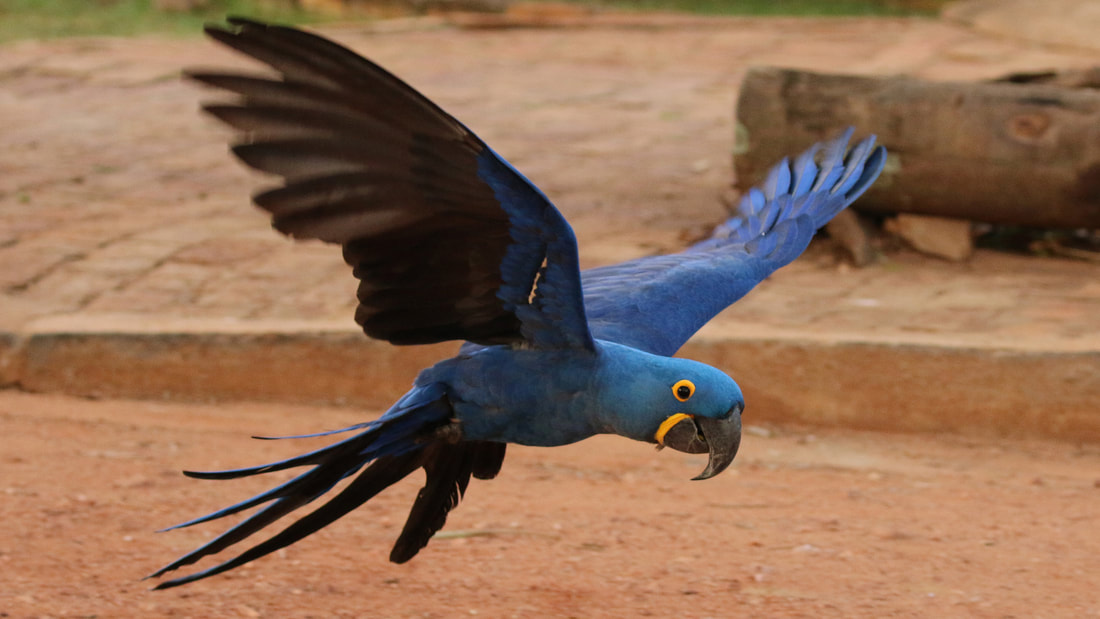
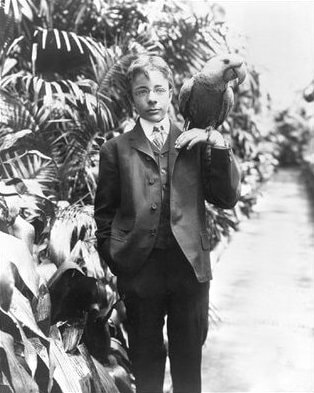

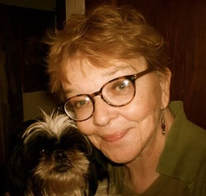

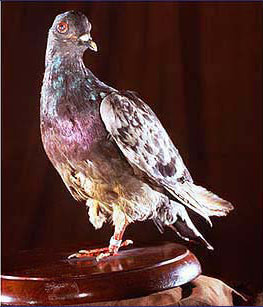
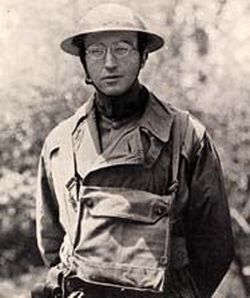
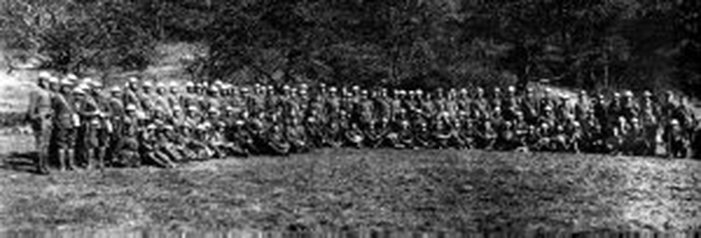


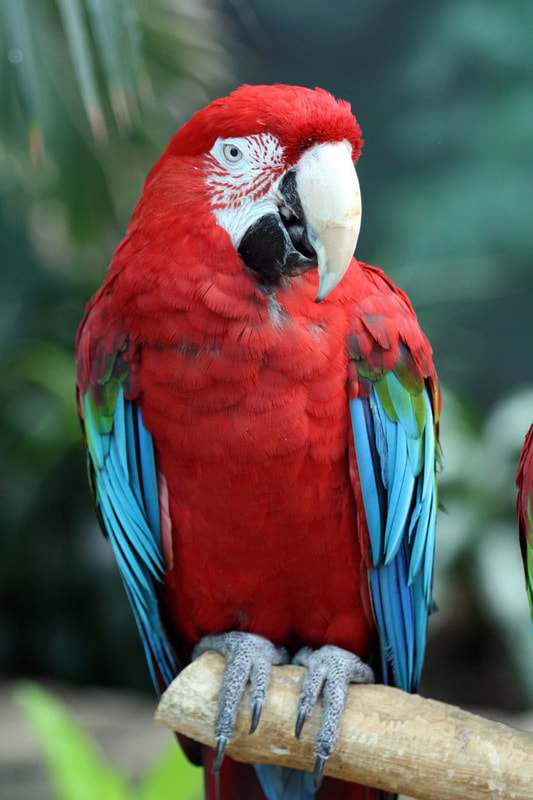

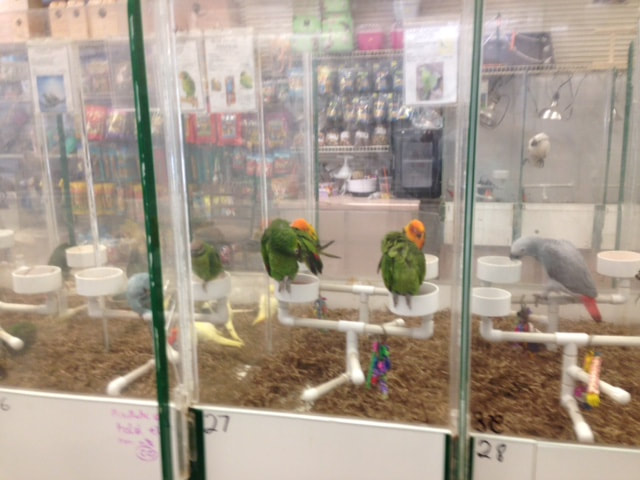

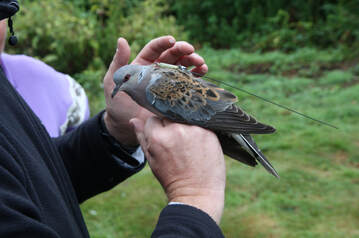
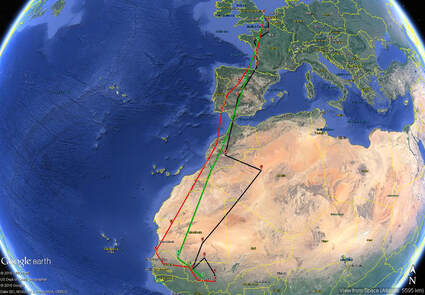
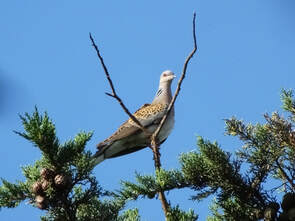
 RSS Feed
RSS Feed
